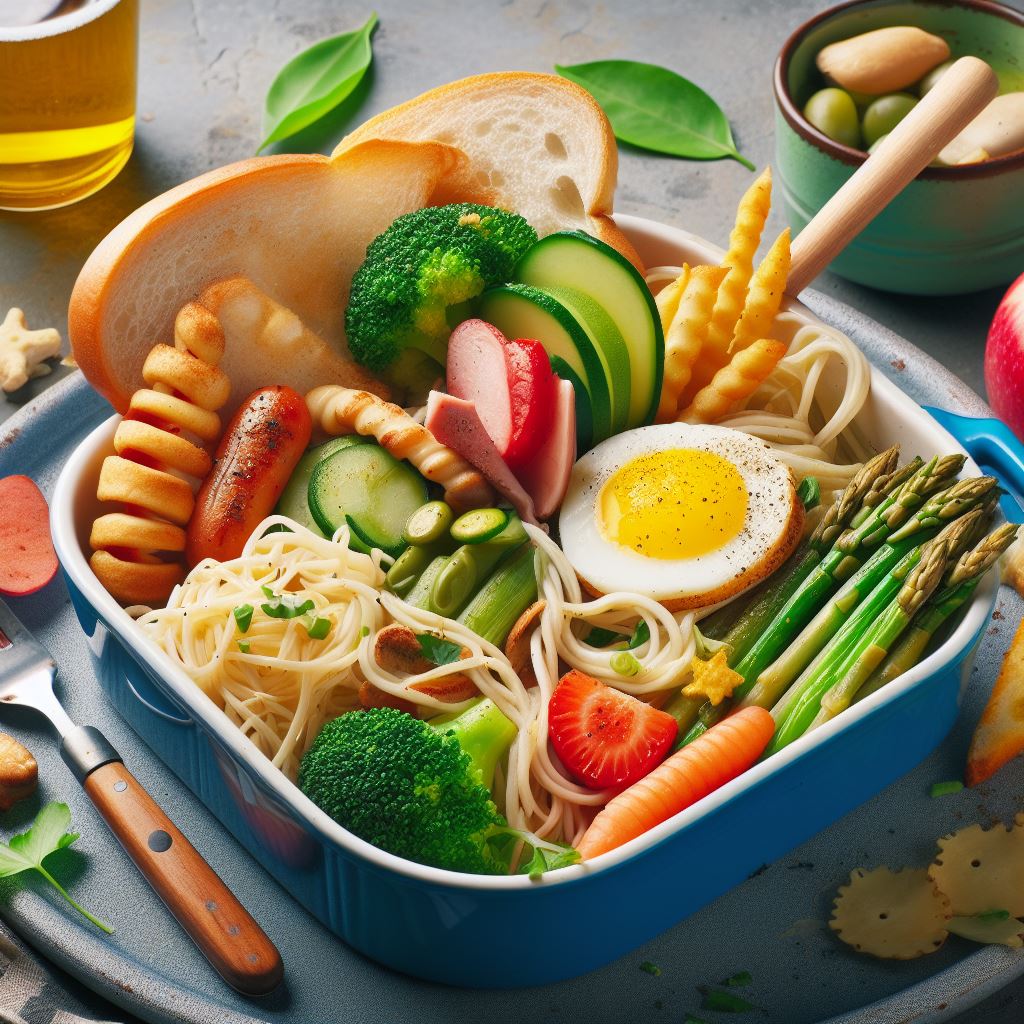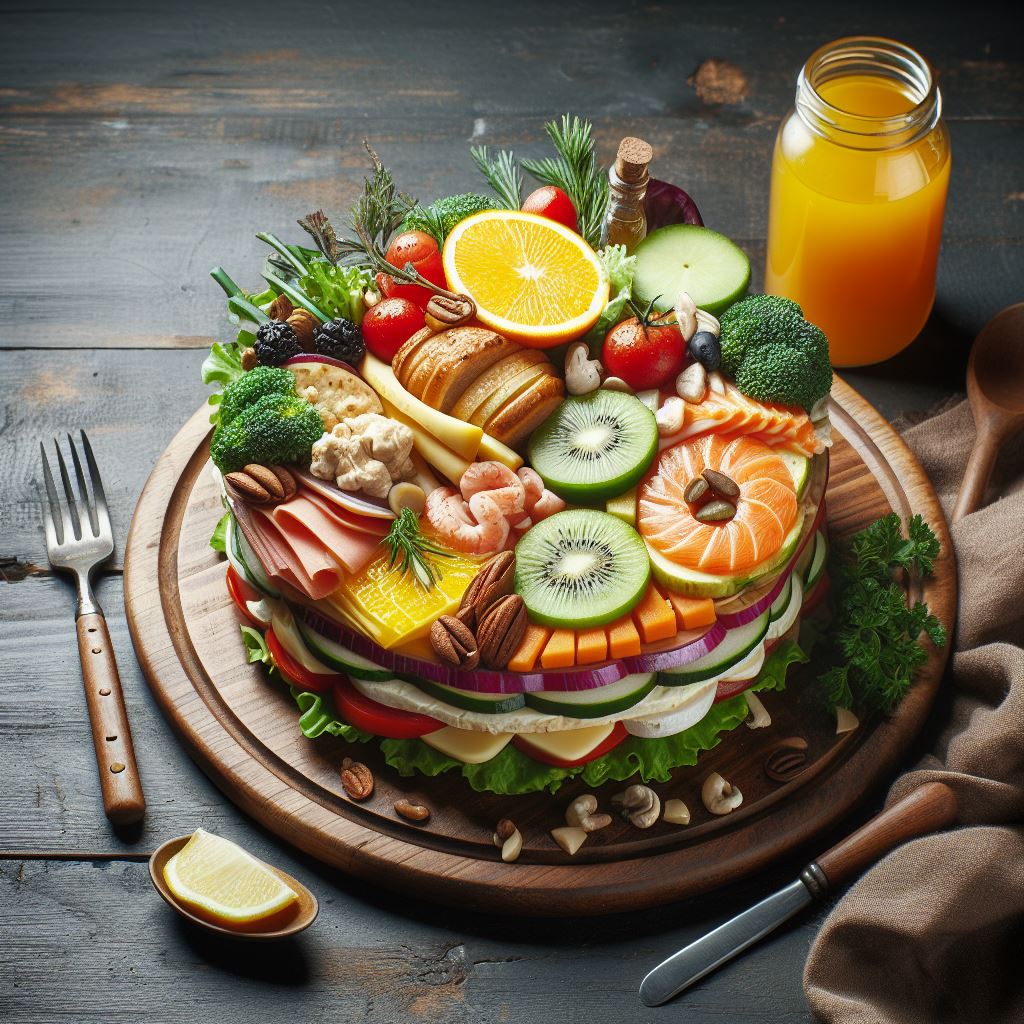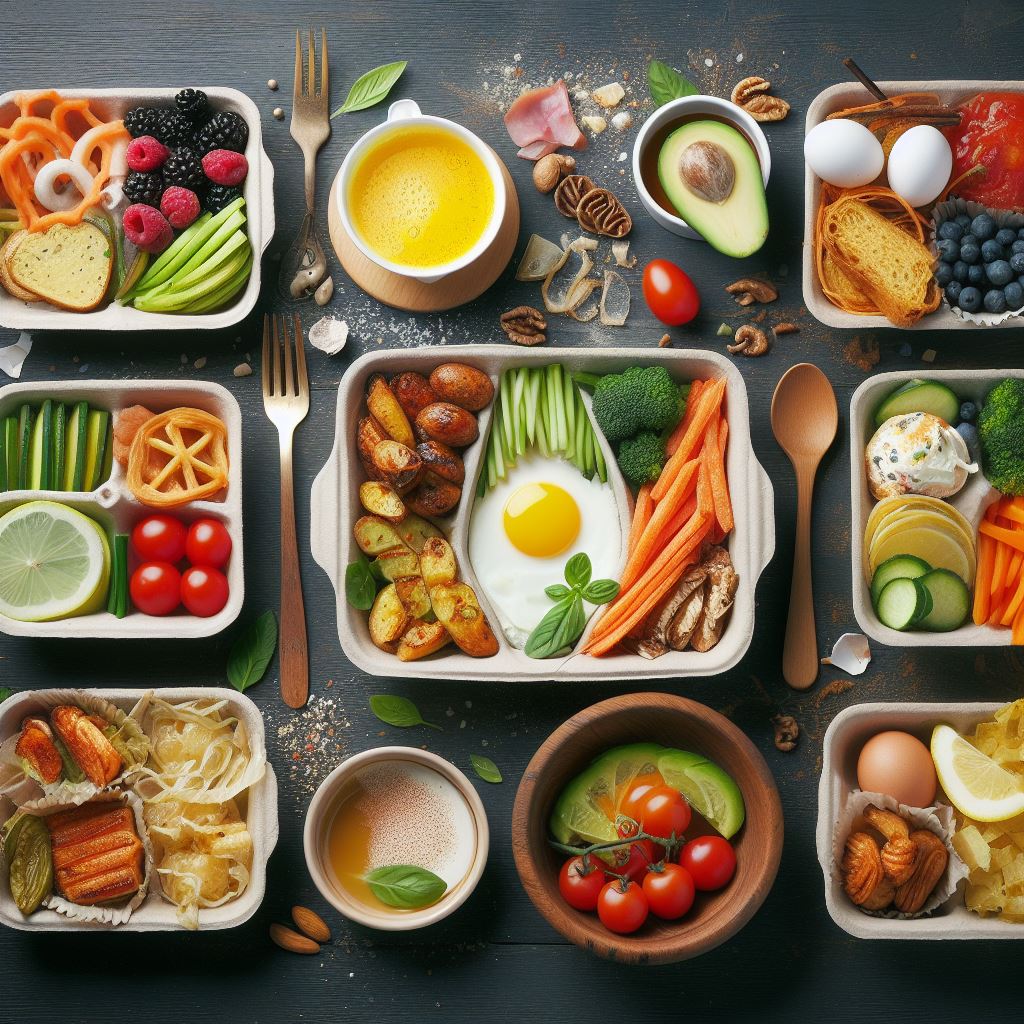Leftover Transformations offer creative ways to repurpose cooked food, reducing waste and refreshing your menu. Discover innovative recipes and methods to give leftovers new life.
Have you ever stared at a fridge full of leftovers wondering how to revamp them? Cooking generates leftovers, but they needn’t be boring or repetitive. With the right techniques, you can transform yesterday’s dishes into today’s delicious meals. This approach is not only economical and environmentally friendly but also a fun challenge that can lead to unexpected and delightful culinary inventions.
Tackling leftover food doesn’t have to be dull; it can unleash your creativity, leading you to combine flavors and textures you might not try otherwise. Our guide to leftover transformations is here to inspire and instruct on the many ways to turn your cooked food into novel, appetizing creations that will excite your taste buds all over again.

Introduction To Leftover Makeovers
Do you often find yourself with extra food from last night’s dinner? It’s time to get creative! Turning leftovers into a delicious new meal not only saves money, but it’s also a fun challenge to flex your culinary muscles. Let’s dive into exciting ways to transform cooked food into something extraordinary.
The Global Issue Of Food Waste
Every year, tons of food goes to waste around the world. This is not just a loss of resources; it’s a missed opportunity to feed millions. By reusing leftovers, we contribute to a solution for reducing food waste. It’s a small step with a big impact on our planet.
Culinary Creativity: Rethinking Leftovers
Think of leftovers as the beginning of a new dish. With imagination, even simple ingredients can become star components in a revamped meal. Whether it’s creating a savory pie from last night’s roast or whipping up a hearty soup with remaining vegetables, the possibilities are endless and exciting.
Health And Safety Tips Before Re-purposing Cooked Food
Before reinventing a dish, remember that safety comes first. Make sure to:
- Store food correctly, sealing and chilling leftovers promptly.
- Reheat to the right temperature—at least 165°F to kill harmful bacteria.
- Be mindful of expiration dates, even with cooked food.
Armed with creativity, knowledge, and a sense of adventure, leftover transformations can lead to both tasty dishes and a healthier planet. Let’s start cooking with a purpose!
The Art Of Reinvention: Turning Leftovers Into New Meals
Imagine a kitchen where last night’s dinner becomes today’s culinary masterpiece. Welcome to the art of reinvention, where leftover cooked food gets a delicious makeover. Instead of tossing them out, let’s transform leftovers into meals that impress, surprise, and delight. It’s not just thrifty, it’s creative cooking at its best. Below, explore innovative ways to give your leftovers a new lease on life!
Soups And Stews: From Bland To Grand
Transform yesterday’s sides and mains into savory soups and stews that taste like they’ve been simmering for hours. It’s simple:
- Chop up leftover proteins and veggies.
- Simmer them in a base of stock or water.
- Add herbs and spices to amplify the flavor.
Whether it’s a chunky vegetable soup or a hearty bean stew, the result is a flavorful and comforting dish that feels entirely new.
Casseroles And One-pot Wonders
Leftovers lend themselves perfectly to effortless casseroles and one-pot dishes. Grab that casserole dish and:
- Mix cooked grains with proteins and vegetables.
- Toss with a binding ingredient like eggs or cheese sauce.
- Bake until golden and bubbling.
Old ingredients come together in a brand-new way to create a warm, baked delight that’s sure to satisfy.
Revolutionizing Breakfast: New Takes On Eggs And Pancakes
The first meal of the day gets a twist with innovative spins on classic breakfast favorites. Take those leftovers and:
| Ingredient | Eggs | Pancakes |
|---|---|---|
| Leftover Protein | Whip into omelets | Add to batter for richness |
| Vegetables | Stir into scrambled eggs | Chop and mix into pancake mix |
| Cheese | Melt into frittatas | Combine into pancake toppings |
Leftover veggies, cheeses, and meats become the stars of extraordinary egg dishes and pancake variations that redefine breakfast.
International Flavors: World-inspired Leftover Dishes
Leftovers are a treasure trove for the creative cook. With a dash of inspiration drawn from cuisines around the globe, yesterday’s meals are reborn as today’s culinary adventure. Let’s embark on a worldwide journey, transforming what’s in the fridge into a celebration of international flavors.
Fried Rice And Stir-frys: Asian-inspired Leftovers
Asia’s vibrant street food scenes inspire these dishes. They turn simple ingredients into something special and savory. Here’s how:
- Sauté onions, garlic, and any available veggies.
- Add rice and your leftover protein – chicken, shrimp, or tofu.
- Stir in soy sauce, sesame oil, and a whisked egg.
- Cook until the egg sets and serve hot with a sprinkle of green onions and sesame seeds.
Tacos And Quesadillas: A Mexican Fiesta
Mexican dishes are perfect for a mix-and-match approach. Fill tortillas with whatever is on hand to make a festive meal.
| Tacos | Quesadillas |
|---|---|
| Heap leftovers into soft tortillas | Sandwich leftovers with cheese between tortillas |
| Top with salsa, cheese, and lettuce | Cook on a skillet until golden |
| Squeeze lime for an extra zing | Serve with guacamole and sour cream |
Curries And Wraps: Exploring Indian Spices With Leftovers
Indian cuisine is all about bold spices. Transform leftovers into a feast for the senses. Follow these steps:
- Heat oil and fry cumin seeds until they pop.
- Add turmeric, coriander, and garam masala for aromatic warmth.
- Mix in cooked veggies and protein, then coat with spices.
- Serve as a curry or cool and wrap in flatbread with yogurt.
Mindful Meal Prep: Planning For Leftovers
Mindful Meal Prep: Planning for leftovers is a smart move. It’s about making meals that are delicious today and equally tasty tomorrow. Think of leftovers as a head start on your next culinary creation. Get ready to turn your surplus fare into tomorrow’s Lunchbox favorites or quick family dinners!
Ingredient Selection: Choosing Leftover-friendly Foods
Selecting the right ingredients can make all the difference. Look for foods that maintain their texture and flavor over time. Here are some top picks:
- Root Vegetables: Beets, carrots, and sweet potatoes keep well.
- Whole Grains: Brown rice and quinoa are great the next day.
- Proteins: Grilled chicken or tofu can be repurposed in multiple dishes.

Cook Once, Eat Twice: Strategies For Meal Preppers
Become a master meal prepper with these straightforward strategies:
- Prepare base ingredients in bulk. This saves time and energy.
- Divide dishes into portions before storing. This way, meals are ready-to-go.
- Get creative with sauces and seasonings. They can give leftovers a fresh twist.
Storing Leftovers: Best Practices For Freshness And Flavor Preservation
Storing leftovers properly can make or break your next meal. Here’s how to keep them fresh:
| Food Type | Container Type | Storage Tip |
|---|---|---|
| Soups/Stews | Airtight containers | Let cool before refrigerating. |
| Cooked Meats | Shallow containers | Wrap tightly to prevent drying. |
| Casseroles | Original dish with cover | Store in smaller sections for easy reheating. |
Remember, label leftovers with the date. Enjoy them within a few days for the best taste and safety.
Leftover Challenges And Solutions
Navigating the world of leftovers requires a blend of creativity and safety. This section dives into turning your fridge’s mix-matched remnants into delicious, cohesive meals. Learn how to decide what’s still good to eat and discover inventive ways to spice up those dull dishes.
Dealing with Disparate Leftovers: Creating Cohesive Dishes
Dealing With Disparate Leftovers: Creating Cohesive Dishes
Leftover ingredients often seem unrelated and mismatched. Yet, with a bit of ingenuity, they can come together in harmony. Exploring a variety of cuisines can inspire fusion dishes that will surprise and delight your taste buds.
- Fridge Scavenger Stir-fry: Combine any veggies and proteins with rice for a quick meal.
- Leftover Fiesta: Toss those odds and ends into tacos or burritos with a sprinkle of cheese.
- Smorgasbord Pizza: Leftover meats and veggies make for great toppings on a homemade crust.
Freshness Concerns: When to Repurpose and When to Discard
Freshness Concerns: When To Repurpose And When To Discard
It’s crucial to ensure safety in your leftover adventures. Always perform a sensory check – look, smell, and if everything seems alright, a small taste test.
| Leftover | Freshness Indicator | Action |
|---|---|---|
| Vegetables | Wilting, Discoloration | Repurpose if safe, otherwise discard |
| Proteins | Off smell, slimy texture | Discard for safety |
| Rice & Pasta | Hardness, mold | Discard if moldy, otherwise refresh with moisture |
Creative Condiments and Seasonings: Elevating Dull Dishes
Creative Condiments And Seasonings: Elevating Dull Dishes
Transform boring leftovers into exciting eats with the right condiments and seasonings. A dash here and a sprinkle there can radically change a dish’s flavor profile.
- Herb Magic: Fresh herbs can bring a burst of flavor.
- Spice It Up: Mix in some spices for heat and depth.
- Saucy Solutions: Add a sauce to bind and enhance flavors.
Community And Environmental Impact
Reimagining leftovers can spark joy beyond your kitchen. It can nourish communities and protect our planet. Let’s dive into how leftover transformations create positive ripples in society.
Sharing The Surplus: Leftovers For Community Fridges And Food Banks
Donating to community fridges and food banks is a powerful act. It turns extra food into meals for those in need. This act builds stronger communities. It also reduces waste. Check the guidelines of your local organizations. Here’s how you can contribute:
- Check food safety: Only donate food that is in good condition.
- Package properly: Use clean containers to ensure food stays fresh.
- Label donations: Include details like the date of cooking and ingredients.
Mindful Consumption: Reducing Carbon Footprint Through Leftover Innovation
Creative use of leftovers can cut down on carbon emissions. It means less food to transport, less to produce, and less to end up in landfills. Here’s how leftover innovation helps the environment:
| Action | Environmental Benefit |
|---|---|
| Reusing Leftovers | Decreases demand for new food production |
| Composting Scraps | Enriches soil, reducing the need for chemical fertilizers |
| Sharing Excess | Minimizes food waste in the community |
Educational Outreach: Teaching Others About Leftover Transformations
Sharing knowledge about food reuse has a lasting impact. It can inspire others to embrace sustainability. Here’s how to spread the word:
- Host Workshops: Teach meal planning and creative cooking skills.
- Create Content: Share recipes and tips on social media or blogs.
- Partner with Schools: Educate students on food waste reduction.

Conclusion
Wrapping up, reimagined leftovers are both eco-friendly and inventive. Embrace these tips to spark your culinary creativity. Transforming cooked food cuts waste and refreshes your menu. Dive into your fridge; magic awaits with every repurposed dish. Give leftovers a delicious second act!
Frequently Asked Questions Of Leftover Transformations: Creative Ways To Reuse Cooked Food
How Do You Use Leftover Food Creatively?
Get creative with leftovers by transforming them into new dishes. Make soups, stir-fries, or casseroles. Blend vegetables into sauces or use meats in sandwiches. Reinvent meals by adding fresh ingredients and spices for a tasty twist. Always taste test for an extra flavor boost.
What Should You Do With Leftover Cooked Food?
Store leftover cooked food in airtight containers and refrigerate within two hours of cooking. Consume them within three to four days, or freeze for longer preservation. Always reheat leftovers thoroughly to at least 165°F before eating. Discard any food that smells or looks questionable.
How Can Leftover Food Be Reused?
Leftover food can be creatively repurposed into new meals, such as using meat for sandwiches or blending vegetables for soup. Save and refrigerate promptly to maintain freshness and ensure safety.
How Do You Transform Leftovers?
Transform leftovers by turning them into new dishes, like soups, salads, or casseroles. Get creative by adding fresh ingredients or spices for a flavor boost. Store leftovers properly for food safety, and always reheat to the right temperature before enjoying your reinvented meal.







